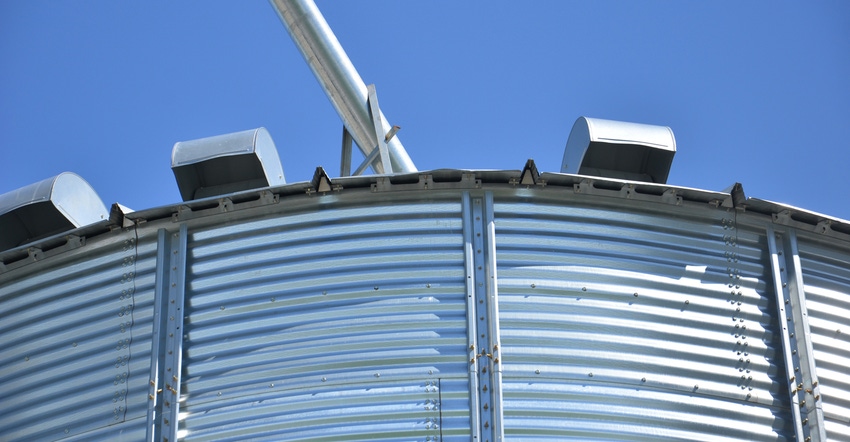
The company that makes the BinMaster 3DLevelScanner says it gives you “X-ray vision like Superman” to see inside grain bins without actually entering them. If you become trapped in flowing grain, Superman won’t be there to help you. Checking out the landscape with this new scanning technology could prevent you from needing his help, and could save your life!
Learn more about this technology at binmaster.com. BinMaster touts the 3DLevelScanner’s ability to measure the volume of grain more accurately than any previous technology. It virtually produces a 3-D map of the contour of the grain pile. Company officials say this technology succeeds where other efforts have failed because it can penetrate dust and produce accurate images.
Besides delivering information on volume, the 3DLevelScanner also reveals whether the grain cone is up or down, and if there are columns of grain adhering to the sidewalls. This information could alert you to potential storage problems, and let you plan safe grain removal options — anything besides entering the bin with the unloading auger running.
That practice leads to grain entrapments, notes Bill Field, Purdue University Extension farm safety specialist. He appears in a new video featuring the re-enactment of a grain entrapment incident in Posey County. This re-enactment is rare because the victim lived to tell the story. Learn more by emailing Field at [email protected].
3-D images, robots and corn
Grain bins aren’t the only place where 3-D images are useful. A collaborative project at the University of Missouri has an important goal: developing corn plants that perform better in drought conditions so farmers can feed more people in the future. How the project’s participants are achieving their goal is downright amazing.
Engineers and plant scientists are working together to develop 3-D images of roots and, most recently, plant shoots. The goal is to produce phenotype information on plants to better study how they interact with the environment. Engineers have created a mobile robot that gets its instructions from a mobile tower in the field. Sensors on the Vinobot measure corn plants at various heights to produce 3-D images of them.
FMC, DuPont reach agreement
FMC acquired DuPont’s global chewing-pest insecticide portfolio, its global cereal broadleaf herbicides, and a substantial portion of DuPont’s global crop-protection research and development capabilities. In return, DuPont received cash and acquired FMC’s Health and Nutrition segment.
DuPont needed to divest assets acquired by FMC to comply with a European Commission ruling related to its merger with Dow Chemical Co. Assets acquired by FMC include 15 synthetic active ingredients currently in the development pipeline.
The deal hinges on closing of the Dow and DuPont merger. The transaction between FMC and DuPont is expected to close in the fourth quarter of 2017.
UAV field scouting map updates
DroneDeploy’s latest Fieldscanner app makes almost-real-time crop scouting from images collected by unmanned aerial vehicles reality. The technology can create a low-resolution image that a scout can use without the aid of the cloud powered by the internet. This enhancement works with DroneDeploy’s app for controlling DJI Phantom drones. Currently, Fieldscanner is available in an iOS version. An Android version is in the works.
If you need a high-resolution image for another purpose, you can still produce it later.
Willie Vogt, executive director of user engagement at Penton Ag, contributed to this column.
About the Author(s)
You May Also Like




